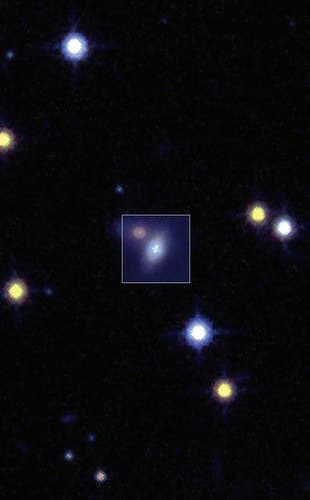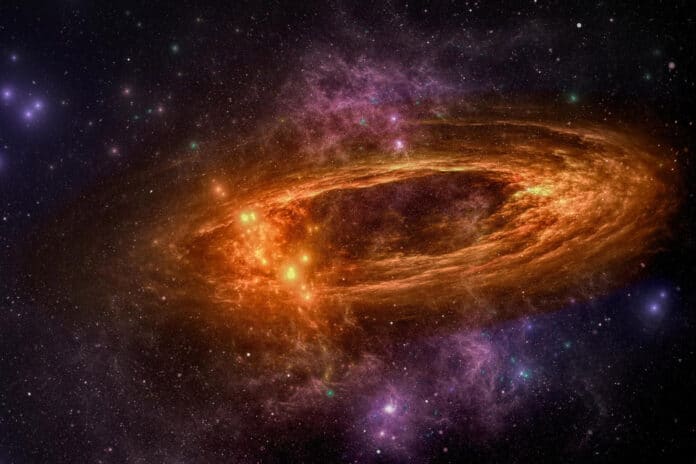Detecting gravitationally lensed supernovae is among the biggest challenges in astronomy. It involves a combination of two rare phenomena: catching the transient signal of a stellar explosion in a distant galaxy and observing it through a nearly perfectly aligned foreground galaxy that deflects light toward the observer.

The explosion of a star known as a supernova, whose light was so twisted by the gravity of another galaxy that it appears in multiple images in the sky, has been captured by astronomers in a peculiar image. This gravitational lensing phenomenon happens when a dense object’s gravity bends and enlarges the light of an object behind it.
Originally detected by the Caltech-led Zwicky Transient Facility, or ZTF, the supernova– SN Zwicky- was brighter than it should have been given its distance to us. After seeing this, astronomers quickly realized they saw a rare phenomenon called strong gravitational lensing. It is a Type Ia supernova.
SN Zwicky is also known as SN 2022qmx. Supernovae are fleeting events, making detecting phenomena like SN Zwicky challenging. In reality, whereas lensed duplicated images of far-off objects known as quasars have been discovered numerous times before, only a small number of supernovae have been lensed into duplicated images. At Palomar, the intermediate Palomar Transient Factory (iPTF), a forerunner to ZTF, found two of these cases: SN Zwicky and ciPTF16geu.
The smallest resolved gravitational lens system discovered with optical telescopes is SN Zwicky. The iPTF16geu system was wider but had a higher magnification.
Astronomers used a suite of astronomical facilities to follow up and study SN Zwicky after it was discovered by ZTF. The Near-IR Camera 2 (NIRC2) at the W. M. Keck Observatory on Maunakea in Hawai’i resolved SN Zwicky, revealing that the lensing of the supernova was strong enough to have created multiple images of the same object.
Journal Reference:
- Goobar, A., Johansson, J., Schulze, S. et al. Uncovering a population of gravitational lens galaxies with magnified standard candle SN Zwicky. Nature Astronomy (2023). DOi: 10.1038/s41550-023-01981-3
